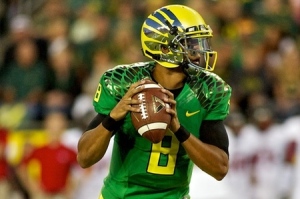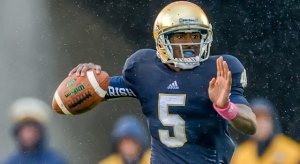
What if Syracuse Had Joined Rival Boston College in the ACC’s First Round of Expansion?
If you’ve checked out today’s daily links, you’ve likely noticed the top story from Syracuse.com, with regard to a little revisionist realignment history. The piece, “Syracuse is About to Join the ACC, But What if SU Had Made the Move 10 Years Ago?” enlists a variety of folks to take a look at what might have been if Syracuse had left the Big East for the ACC along with Boston College and Miami, as originally planned. It’s a very worthwhile read, though I did want to dive a bit deeper into some of the points, and bring up a few points of contention as well. Again, definitely enjoyed the article, but I do think some of the decisions seem to forget the timeline of all these things and the motivations of certain leagues, in particular. Taking a look at their timeline…
Move 1: Boston College, Miami and Syracuse depart Big East for ACC (2004)
No qualms here — obviously this is the decision that gets the ball rolling.
Move 2: Virginia Tech departs Big East for SEC (undetermined)
Unsure when this move takes place, but I’d venture to guess not immediately after the first round of expansion above. The further away from that point in time we get, I’d agree, the more likely this happens. Though I’d also bet that if it hadn’t happened by about 2010 or so, the Hokies end up in the ACC.
Move 3: Texas A&M departs Big 12 for SEC (2010)
This almost happened in real life, and would end up coming to fruition a year later anyway. No surprise here.
Move 4: Missouri departs Big 12 for Big Ten (2010)
… And here’s where I bring up an issue. The dominoes started falling in 2010 when the Big Ten announced they were searching for a 12th member. I’d bet that even in this revised timeline, that’s still the case, meaning they’d get to move first. Their target was always Nebraska, and despite multiple overtures by Missouri, the Big Ten’s continually said no. So I’d probably adjust this to reflect the Huskers heading up to the B1G, instead of the Tigers.
Move 5: Texas and Oklahoma depart Big 12 for Pac-10 (2010)
Here’s another one where I’m at least partially confused. We all remember the first version of “OMG Pac-16!!!” but this hypothetical seems to forget the rest of it. Texas and Oklahoma weren’t going anywhere without Texas Tech and Oklahoma State. And what the hell happens to Colorado here? We never find out. I’m fine with hypotheticals — this is a college football blog after all — but I think the real-life motivations need to be accounted for with these moves. It also ignores the inherent issue the Pac-10/12 has with Texas: the Longhorn Network.
Continue reading →







